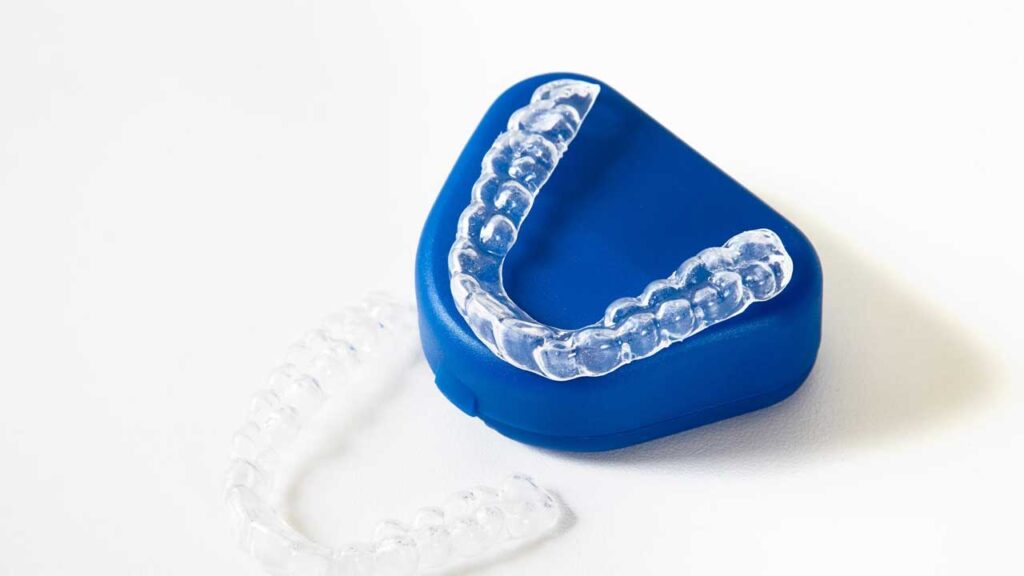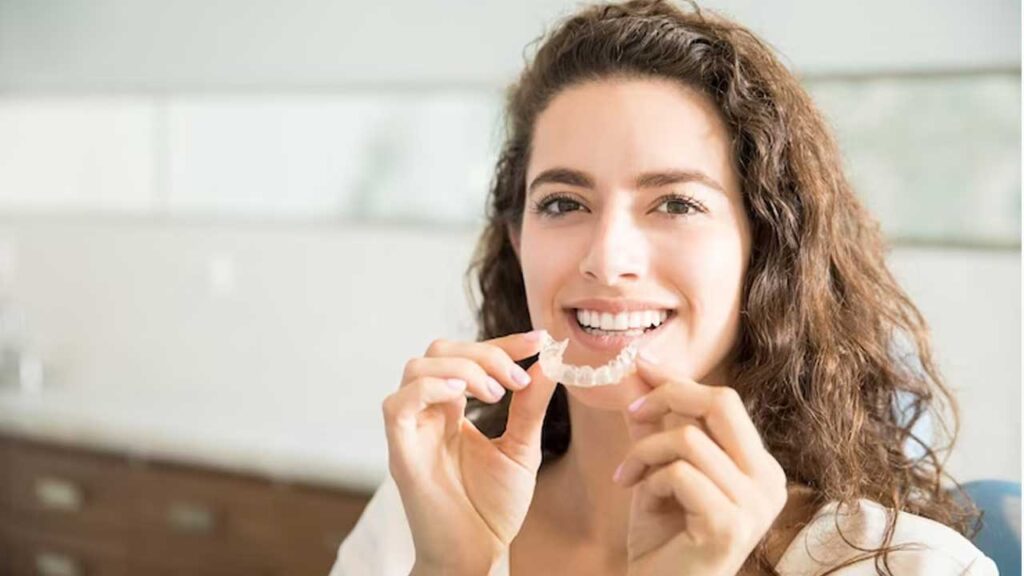Orthodontic wax is a product that can help you relieve the discomfort and irritation caused by braces. Braces are devices that are used to straighten your teeth and correct your bite, but they can also rub against your gums, cheeks, tongue, and lips, causing soreness and ulcers. Orthodontic wax can cover the sharp edges of the brackets and wires, creating a smooth surface that protects your mouth.
In this article, you will learn:
- What are the benefits of using orthodontic wax?
- How to choose the right orthodontic wax for your needs?
- How to apply and remove orthodontic wax correctly
- What are the possible risks and side effects of orthodontic wax?
- How to take care of your braces and oral hygiene with orthodontic wax

Benefits of Using Orthodontic Wax
Orthodontic wax can provide several benefits for people who wear braces, such as:
- Reducing pain and inflammation: Orthodontic wax can prevent the braces from scraping and cutting your soft tissues, which can cause pain, swelling, bleeding, and infection. Orthodontic wax can also soothe the existing wounds and promote healing.
- Improving comfort and confidence: Orthodontic wax can make your braces feel more comfortable and less noticeable. You can speak, smile, and eat without worrying about your braces hurting or embarrassing you.
- Enhancing treatment effectiveness: Orthodontic wax can help you stick to your treatment plan and avoid skipping appointments or adjusting your braces yourself. If you experience less discomfort and inconvenience from your braces, you are more likely to follow your orthodontist’s instructions and achieve the best results.
How to Choose the Right Orthodontic Wax for Your Needs?
Orthodontic wax is available in different types, forms, and flavors. Here are some factors to consider when choosing the right orthodontic wax for your needs:
- Type: Orthodontic wax can be made from natural or synthetic ingredients, or a combination of both. Natural waxes are derived from plants or animals; such as beeswax or carnauba wax. Synthetic waxes are formulated in laboratories from natural wax molecules and other chemical elements. Some people may prefer natural waxes for their organic and biodegradable properties, while others may prefer synthetic waxes for their durability and consistency.
- Form: Orthodontic wax can come in different forms, such as sticks, strips, or dots. Sticks are long pieces of wax that you need to break off and shape with your fingers before applying. Strips are pre-cut pieces of wax that you can peel off and place on your braces. Dots are small balls of wax that you can press on your braces without shaping. Some people may find sticks more economical and versatile, while others may find strips or dots more convenient and easy to use.
- Flavor: Orthodontic wax can be flavorless or flavored with various tastes, such as mint, bubblegum, strawberry, or grape. Some people may like flavored waxes for their pleasant taste and freshness, while others may prefer flavorless waxes for their neutrality and simplicity.
How to Apply and Remove Orthodontic Wax Correctly
Orthodontic wax is easy to use if you follow these simple steps:
- Wash your hands thoroughly before handling the wax or touching your mouth.
- Brush your teeth and clean your braces to remove any food particles or plaque that may interfere with the adhesion of the wax.
- Dry the area where you want to apply the wax with a tissue or a cotton swab. Moisture can prevent the wax from sticking properly.
- Take a small piece of wax (about the size of a pea) from the container with your fingers. If you are using a stick, break off a piece with your fingers or scissors. If you are using a strip or a dot, peel off a piece with your fingers.
- Roll the piece of wax between your fingers until it becomes soft and pliable. You can also warm it up by placing it in your mouth for a few seconds.
- Place the piece of wax over the bracket or wire that is causing irritation. Press it gently with your fingers until it covers the entire area. Smooth out any rough edges with your fingers or tongue.
- Repeat the process until all the areas that need protection are covered with wax.
- Check your mouth in a mirror to make sure that the wax is applied correctly and securely.
To remove orthodontic wax from your braces, follow these steps:
- Wash your hands thoroughly before handling the wax or touching your mouth.
- Brush your teeth and clean your braces to loosen any pieces of wax that may be stuck on them.
- Use a toothpick, a dental flosser, or an interdental brush to gently lift off any remaining pieces of wax from your braces. Be careful not to damage or dislodge any brackets or wires.
- Rinse your mouth with water or mouthwash to remove any traces of wax or debris.
- Dispose of the used wax in a trash can. Do not reuse or swallow the wax.
Possible Risks and Side Effects of Orthodontic Wax
Orthodontic wax is generally safe and harmless, but it may cause some minor risks and side effects, such as:
- Allergic reaction: Some people may be allergic or sensitive to the ingredients of the wax, especially if it contains latex or artificial flavors. Symptoms of an allergic reaction may include itching, swelling, rash, hives, or difficulty breathing. If you experience any of these symptoms, stop using the wax and contact your orthodontist or doctor immediately.
- Ingestion: Some people may accidentally swallow small amounts of wax while eating, drinking, or sleeping. This is usually not a problem, as the wax is non-toxic and will pass through your digestive system without causing any harm. However, if you swallow large amounts of wax or have trouble swallowing or breathing, seek medical attention as soon as possible.
- Plaque accumulation: Some people may neglect their oral hygiene while using orthodontic wax, as they may find it difficult or inconvenient to brush and floss around the wax. This can lead to plaque accumulation and increased risk of tooth decay and gum disease. To prevent this, make sure to change the wax at least twice a day and maintain good oral hygiene habits.
How to Take Care of Your Braces and Oral Hygiene with Orthodontic Wax
Orthodontic wax can help you cope with the discomfort and irritation caused by braces, but it is not a substitute for proper care and maintenance of your braces and oral hygiene. Here are some tips on how to take care of your braces and oral hygiene with orthodontic wax:
- Use orthodontic wax only when necessary. Do not rely on it too much or use it for too long, as it may delay your mouth’s adaptation to the braces or mask a serious problem that needs attention.
- Visit your orthodontist regularly for check-ups and adjustments. Your orthodontist will monitor your progress and make any necessary changes to your braces to ensure optimal results. If you have any broken or loose brackets or wires, do not try to fix them yourself. Use orthodontic wax to cover them temporarily and contact your orthodontist as soon as possible for repair.
- Follow your orthodontist’s instructions on what to eat and what to avoid with braces. Some foods and habits can damage your braces or interfere with your treatment, such as hard, sticky, chewy, or sugary foods, biting your nails, chewing ice, or opening packages with your teeth. Avoid these foods and habits and choose soft, nutritious, and easy-to-chew foods instead.
- Brush your teeth and floss regularly and thoroughly with braces. Braces can trap food particles and plaque between your teeth and around the brackets and wires, increasing the risk of tooth decay and gum disease. To prevent this, brush your teeth at least twice a day with a soft-bristled toothbrush and fluoride toothpaste. Use an interdental brush or a water flosser to clean between your teeth and under the wires. Rinse your mouth with water or mouthwash after every meal or snack.
- Use other products that can help you with braces discomfort and oral hygiene, such as mouth rinses, gels, sprays, or lozenges that contain ingredients that can soothe inflammation, numb pain, moisturize dryness, or prevent infection. You can also use lip balms or moisturizers to prevent chapped lips caused by braces.
Here are some frequently asked questions (FAQ) about orthodontic wax and their answers:
Q: How often should I change the orthodontic wax on my braces?
A: You should change the orthodontic wax on your braces at least twice a day, or whenever it becomes loose, dirty, or falls off. You should also remove the wax before brushing your teeth and cleaning your braces, and apply a new piece of wax after.
Q: Can I eat or drink with orthodontic wax on my braces?
A: You can eat or drink with orthodontic wax on your braces, but you should avoid hot, sticky, or hard foods and beverages that may melt, pull, or break the wax. You should also check your mouth after eating or drinking to make sure that the wax is still in place and not swallowed.
Q: What should I do if I run out of orthodontic wax?
A: If you run out of orthodontic wax, you should contact your orthodontist as soon as possible and ask for more. You can also buy orthodontic wax from most pharmacies or online stores. In the meantime, you can use some temporary alternatives to cover the irritating areas of your braces, such as sugar-free chewing gum, dental silicone, or cotton balls. However, these alternatives are not as effective or safe as orthodontic wax, so you should replace them with orthodontic wax as soon as possible.
Q: Is orthodontic wax safe for children and pets?
A: Orthodontic wax is safe for children and pets, as it is non-toxic and harmless if swallowed in small amounts. However, you should still keep the wax out of reach of children and pets, as they may choke on it or ingest large amounts of it. If you suspect that your child or pet has swallowed a large amount of wax or has trouble breathing or swallowing, seek medical attention immediately.
Q: How long do I need to use orthodontic wax for my braces?
A: The length of time that you need to use orthodontic wax for your braces depends on several factors, such as the type and duration of your treatment, the size and shape of your mouth, and your personal preference. Some people may need to use orthodontic wax for the entire duration of their treatment, while others may only need it for the first few weeks or months. Generally, you will need to use orthodontic wax more often at the beginning of your treatment, when your mouth is adjusting to the braces, and after each adjustment, when your braces are tightened or changed. As your mouth becomes more accustomed to the braces and your teeth move into their desired positions, you will need less orthodontic wax to protect your mouth.
Orthodontic wax is a product that can help you relieve the discomfort and irritation caused by braces. It can cover the sharp edges of the brackets and wires, creating a smooth surface that protects your mouth. Orthodontic wax is easy to use, safe to swallow, and available in different types, forms, and flavors. However, orthodontic wax may also cause some minor risks and side effects, such as allergic reaction, ingestion, or plaque accumulation.
Therefore, you should use orthodontic wax only when necessary, follow your orthodontist’s instructions on how to apply and remove it correctly, and take good care of your braces and oral hygiene with orthodontic wax

5 thoughts on “What is Orthodontic Wax? How Does it Work?”